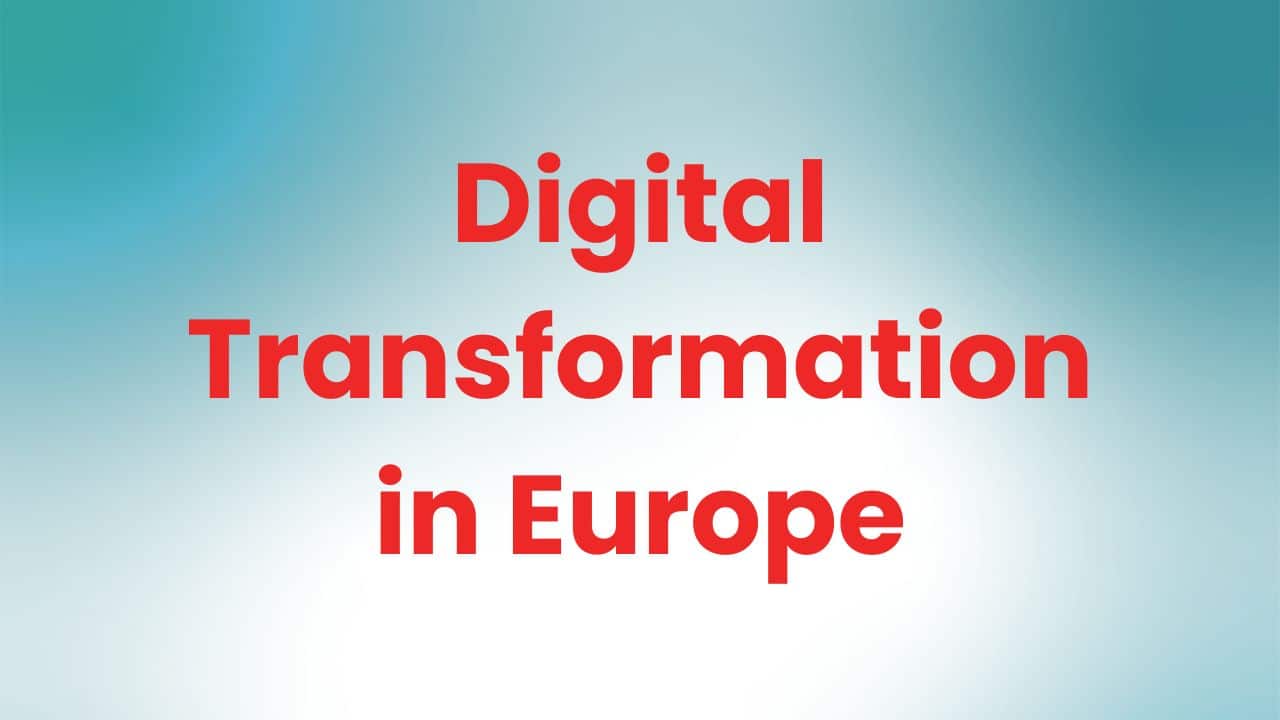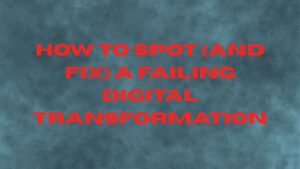If you’re leading a digital transformation in 2025, you should be watching Europe.
Even if you’re not based there, what’s happening across the EU and UK right now is shaping how big tech will behave, how cloud will be regulated, and how organizations will think about risk, modernization, and control over the next few years.
I’ve spent a lot of time in Europe lately with our team at Third Stage Consulting, and I recently sat down with Stuart Robb, who leads our European practice, to unpack what we’re seeing on the ground. The short version: transformation is still moving, but the mindset in Europe is very different from the messaging you’re hearing from software vendors.
Let’s dig into the big shifts.
Table of Contents
Toggle1. Centralization is back, and so is concentration of risk
If you’ve been around technology long enough, you’ve watched the cycle:
- Centralized mainframes
- Then distributed client/server
- Then hosted/ASP
- Now cloud platforms that centralize again
We’re basically back to “the mainframe runs everything, and you’re a terminal,” just with better interfaces and brand names.
But here’s the catch: today’s “mainframe” isn’t in your building. It’s in Amazon’s, Microsoft’s, SAP’s, etc. The promise is obvious: lower internal infrastructure costs, faster deployment, and offloading maintenance. That’s the selling point.
The risk is obvious too: you’ve now handed critical operations, data, security posture, and uptime to someone else.
Europe (especially highly regulated industries, public sector, and large multinationals) is getting very sober about that trade-off. We’ve seen repeated cases of cyber incidents and outages where core services are offline for days or even weeks. Those same types of failures would have gotten people fired overnight in the mainframe era, when recovery was fully in-house and could be done in under a day.
More and more executives in Europe are asking a question that’s not getting asked loudly enough elsewhere:
“Are we actually more resilient now, or just more dependent?”
That’s not anti-cloud. It’s anti-blind-trust.
2. The SAP pressure wave, and the pushback
SAP wants its ECC customers to move to S/4HANA. That’s not a secret. The message from SAP is basically:
- Support for ECC is ending.
- You need to modernize.
- You’ll get innovation like AI if you migrate.
- “Clean core” and standardization will make you better.
Here’s what we’re actually seeing with European clients:
- Many of them do not want to move.
- The ones that are moving often feel they’re doing it out of fear, not because there’s a measurable business case.
- The ones who are mid-migration are discovering the jump from ECC to S/4HANA is not a routine “upgrade.” It’s closer to a reimplementation.
Why the resistance?
First: ECC works. In a lot of mature organizations, ECC has been built out, tuned, customized, and hardened over decades. That’s not “technical debt.” That’s embedded operational knowledge.
Second: those customizations often are the business model. Many companies, especially large manufacturers, pharma, industrials, etc., have critical processes and competitive capabilities that live in ECC custom code. S/4HANA, especially in its cloud form, is much less flexible. You don’t simply pick that IP up and drop it into a “clean core.” You are being asked to give some of it up.
Third: cost and risk. Migrating to S/4HANA in a meaningful way is not a lightweight lift. It’s expensive, disruptive, politically sensitive, and full of integration and change management challenges.
Finally: leverage. We’re now seeing real regulatory scrutiny in Europe around SAP’s ability to force customers off ECC and into its newer stack on SAP’s terms, especially around support timelines and licensing. That’s creating public, not just private, pressure.
The bottom line: European customers are saying, “We’ll move when it makes sense for us, not just because you’re telling us to move.”
That’s a huge mindset shift.
3. AI is being sold as inevitable. Europe isn’t buying the inevitability story.
A common pattern in the global market right now is:
“If you want AI, you need to be on our new cloud ERP. You won’t get the full AI value unless you modernize.”
In other words: “AI” is being used to sell large, expensive platform changes.
Here’s the problem: the pitch overshoots reality.
In day-to-day operations (finance, accounting, basic ERP workflows), the “AI” being sold is often either:
- workflow automation that already existed under a different name, or
- large language model chatbots that can’t reason about business rules, exceptions, approvals, compliance, or nuance.
European organizations are discovering two things:
- A lot of so-called AI in ERP is still immature, or mostly cosmetic.
- Real, valuable automation already exists in narrower, proven use cases (like invoice capture, accounts payable matching, route optimization, supply chain modeling, etc.), and those don’t always require blowing up the entire core system to get value.
There is interest in AI. Especially in planning, forecasting, and logistics. But there’s also fatigue with “AI will fix everything.” In most boardrooms we’re in, AI doesn’t get a check just because it sounds futuristic. It has to prove, with numbers, that it will improve operations in a way that justifies the cost, risk, and disruption of adopting it.
That pragmatism is healthy.
4. Big firms are no longer blindly trusting big firms
Another theme in Europe: large enterprises are a lot less willing to be pushed around by software vendors and global system integrators.
They’re negotiating harder. They’re refusing terms that create endless financial exposure. They’re openly walking away if support models and liability don’t make sense.
A few years ago, “you don’t get fired for choosing [insert big vendor here]” was still a very real thought. Today, leadership teams are much more comfortable saying, “No, we’re not signing that. We’re not accepting that licensing model. We’re not letting you dictate our entire roadmap.”
That’s not just healthy for those individual companies. It’s going to change vendor behavior across the industry.
5. The most underrated move in Europe right now: waiting on purpose
This was one of Stuart’s strongest points, and it surprised a lot of people when he said it out loud:
Sometimes the smartest move in 2025 is to wait.
Not stall. Not ignore modernization forever. But deliberately pause, assess, and avoid jumping into a multi-year, high-risk transformation at a moment when:
- the economics are wobbly,
- the regulatory environment is shifting,
- ERP vendors are under pressure and reshaping their business models,
- and AI is still largely speculative outside of focused use cases.
That’s not “doing nothing.” That’s active risk management.
During that pause, there’s plenty of real work you can do:
- Strengthen and stabilize the systems you already run.
- Clean up data.
- Improve processes (especially the broken ones you’d just end up dragging into the next platform).
- Map where your true competitive IP actually lives.
- Clarify the business case for any major change before committing.
In other words: get sharper before you get louder.
What this means if you’re not in Europe
If you’re in North America, APAC, or anywhere else, here’s why this matters to you:
- The European Union tends to move first on tech regulation, security expectations, data protection, and vendor accountability. Those patterns often ripple outward.
- The growing resistance to “you must upgrade because we say so” is not just cultural, it’s structural. It’s about cost/benefit math, risk, leverage, and control.
- The pushback on AI hype is not anti-innovation. It’s “prove it.”
The lesson here is not “never modernize.” It’s “don’t let urgency be manufactured for you.”
Your strategy should be built around your operating model, not a vendor’s timeline.
And frankly, that mindset is overdue everywhere.
If you’re in Europe, or you’re about to be pressured into a cloud ERP move, an AI add-on, or an S/4HANA migration, our team in the region is helping organizations slow the conversation down, separate marketing from reality, and build roadmaps that actually match business value and risk tolerance. Reach out if you want a gut check before you lock in a path.





